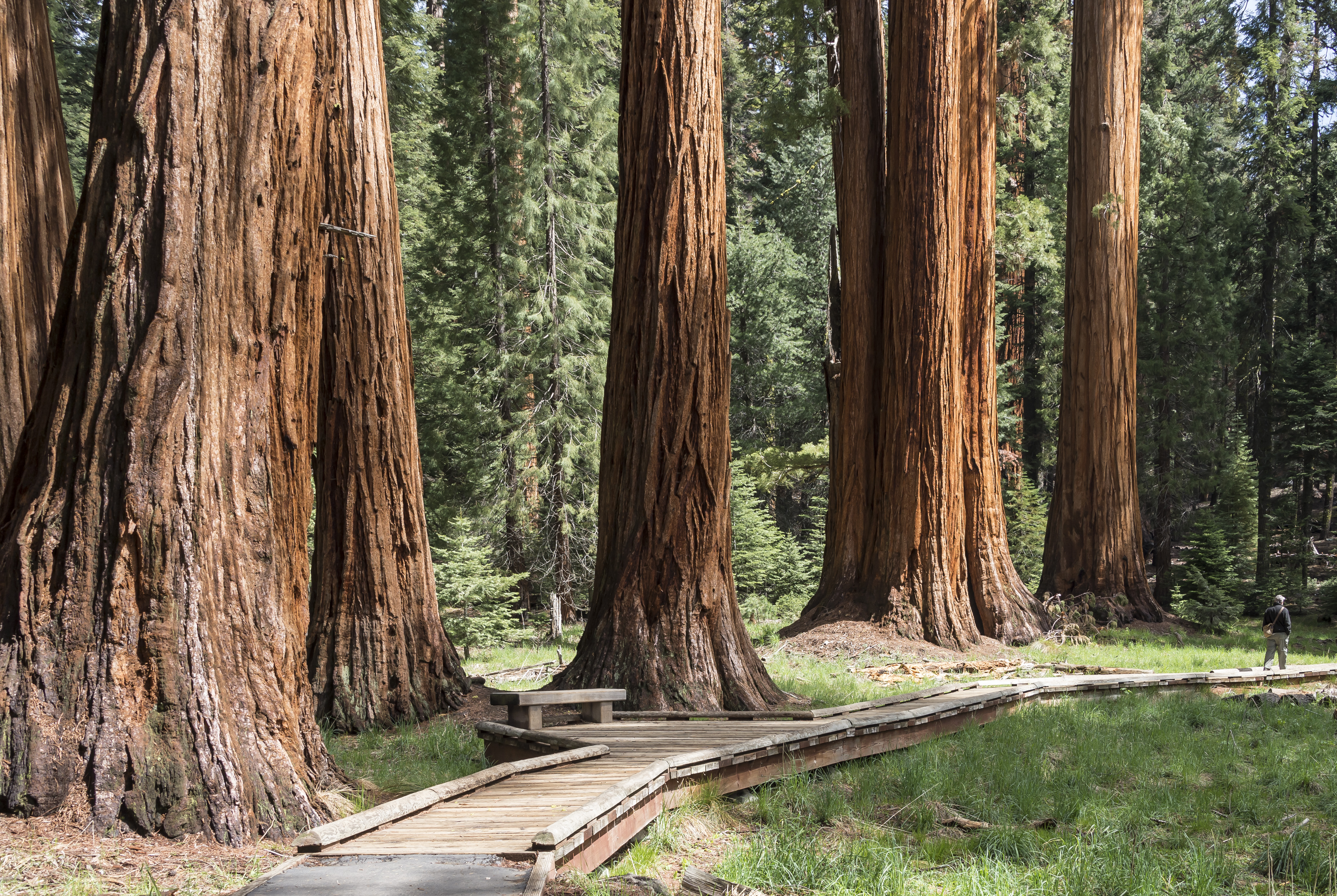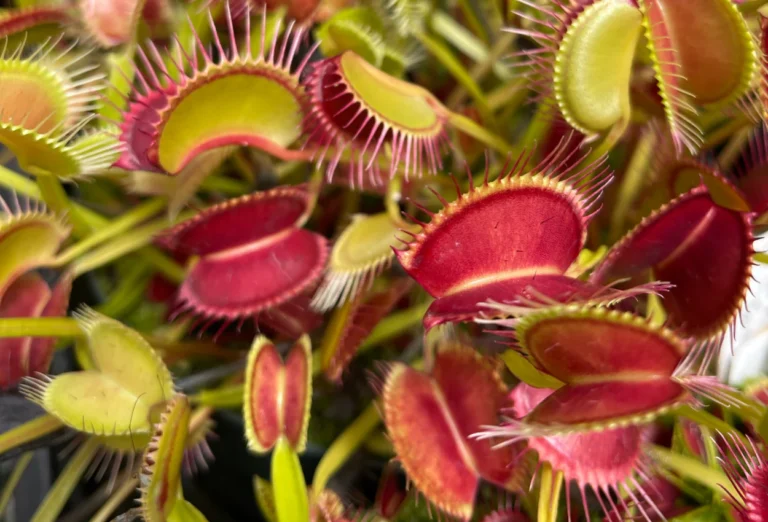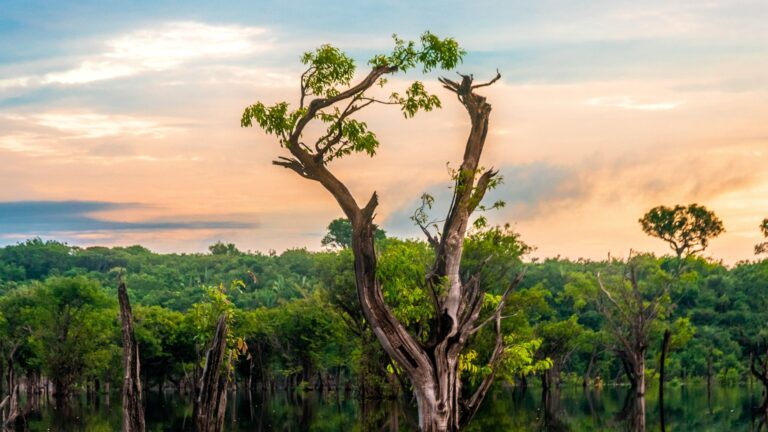Step into a world where time stands still, where the living monuments of Earth’s ancient history tower above us, whispering tales from epochs long past. Welcome to a fascinating exploration of the planet’s oldest trees, the magnificent ancient giants that have silently watched the ebb and flow of civilizations, outliving epochs and empires. This is not just about age, it’s about the resilience, strength, and unparalleled beauty these arboreal wonders embody.
These time-tested titans, some of which have been silently standing for over 5,000 years, are not merely living things; they’re storytellers. They’re the chroniclers of our world’s climatic shifts, ecological upheavals, and anthropological transformations. From the Methuselah tree hidden in the Inyo National Forest of California to the sacred Jomon Sugi in Japan, we’ll explore these natural wonders and their rich narratives.
This journey is not only about understanding the immense age of these trees but also delving into the scientific methods that allow us to unearth their age. We will explore the unique techniques like dendrochronology and radiocarbon dating that make it possible for us to unlock the secrets held in the heartwood of these age-old sentinels.
Through this exploration, we hope to inspire a sense of awe and respect for these ancient giants, which, despite their longevity and resilience, face considerable threats from climate change, deforestation, and human encroachment. Join us on this journey to unveil the majesty of the oldest trees on Earth, the silent watchers of our world’s history. 🌳🌍
The Methuselah Tree: A 4,800-year-old Bristlecone Pine
The Methuselah Tree, located in the remote reaches of the White Mountains in eastern California, is a living marvel of endurance and resilience. As a Bristlecone Pine (Pinus longaeva), this tree has defied the odds for over 4,800 years, making it one of the oldest known living non-clonal trees on Earth. Its exact location is carefully protected by the U.S. Forest Service to prevent vandalism and to preserve its delicate environment, adding to the tree’s mystique and reverence.

The Methuselah Tree’s astonishing longevity can be attributed to the incredibly harsh conditions of its high-altitude home, sitting at around 10,000 feet above sea level. This barren, wind-swept terrain is not hospitable to most forms of life. However, it is precisely these extreme conditions that have allowed Methuselah and other Bristlecone Pines to thrive. The cold, arid climate limits the presence of pathogens and pests, while the rocky, nutrient-poor soil slows the tree’s growth rate significantly. This slow growth contributes to the tree’s dense, resinous wood, making it exceptionally resistant to rot, insects, and even fire.
One of the most fascinating aspects of the Methuselah Tree is its appearance. Its gnarled and twisted trunk, weathered by centuries of sun, snow, and wind, tells a visual story of survival. Parts of the tree are dead, while others remain alive, allowing it to allocate its limited resources efficiently. This partial growth strategy helps the tree minimize damage and preserve essential life functions over thousands of years.
Beyond its physical characteristics, the Methuselah Tree holds immense scientific value. Dendrochronologists—scientists who study tree rings—have used Bristlecone Pines like Methuselah to reconstruct past climates and extend the timeline of historical and environmental records. By studying the growth rings of these ancient trees, researchers can gather valuable data on temperature fluctuations, drought periods, and atmospheric changes that date back thousands of years. These findings help us understand not only the tree’s history but also the Earth’s climatic evolution.
Methuselah stands not just as a biological anomaly but as a silent witness to human history. When it first sprouted, the Egyptian pyramids had not yet been built, and written language was still in its infancy. It is a living bridge to our ancient past, a testament to nature’s quiet strength and patience in the face of time.
Adaptation Strategies of the Methuselah Tree
The Methuselah Tree’s extraordinary age is no coincidence—it is the result of a remarkable array of adaptation strategies that have allowed it to survive for nearly five millennia in one of the most inhospitable environments on Earth. These strategies, honed over countless generations, provide a compelling example of how life can not only endure, but thrive in extreme conditions.
One of the tree’s most crucial adaptations lies in its growth rate. The Methuselah Tree grows extremely slowly, adding only a tiny fraction of an inch to its girth each year. This slow growth results in wood that is incredibly dense and resinous, making it highly resistant to decay, insect infestation, and fungal attack. Unlike many fast-growing trees that expend energy rapidly and are more vulnerable to damage, the Methuselah Tree conserves its resources, investing in durability over speed.

Resin production plays a vital role in the tree’s defense mechanism. The resin acts as a natural antiseptic and insect repellent, sealing wounds and preventing infections from spreading within the wood. This chemical defense system helps the tree heal and protects it from microbial threats that would easily compromise a less robust species.
The Methuselah Tree has also mastered the art of selective growth. In times of drought or extreme cold, the tree can enter a near-dormant state, reducing its metabolic activity to conserve moisture and energy. It may stop growing altogether for years at a time, waiting patiently for better conditions. Additionally, the tree often allows parts of itself to die off—a process known as “partial mortality”—while keeping its core and essential living tissue alive. Dead sections of the trunk remain as natural armor, shielding the living parts from the harsh climate and physical damage.
Another impressive adaptation is the tree’s root system, which is broad and shallow rather than deep. This allows it to quickly absorb any available moisture from brief rainfalls or melting snow in the rocky, high-altitude soil. The roots also help anchor the tree securely against the relentless winds of the White Mountains, which can erode soil and topple less stable plants.
The Methuselah Tree’s twisted and weathered shape is also an adaptation. The contorted form reduces wind resistance and prevents heavy snow accumulation on the branches, decreasing the risk of breakage. Its bark is thin and often worn away, but this has little effect on the tree’s survival, as the inner wood is strong and adapted to function even when exposed.
Finally, the Methuselah Tree benefits from its remote, high-elevation location. The isolation protects it from forest fires, human interference, and most animal threats. Its surroundings—cold, rocky, and nutrient-poor—discourage competition from other plants, allowing Bristlecone Pines to dominate the landscape virtually unchallenged.
Together, these adaptation strategies form a finely tuned survival system. The Methuselah Tree is not just a survivor; it is a master of resilience, teaching us how patience, conservation, and subtle strength can ensure longevity even in the harshest conditions on Earth.
The Ancient Patriarch Grove
Nestled within the White Mountains of California, the Patriarch Grove stands as a remarkable testament to nature’s endurance and quiet grandeur. This remote and elevated grove sits at nearly 11,000 feet above sea level and offers an otherworldly landscape dotted with twisted, timeworn Bristlecone Pines. These trees are not only among the oldest living organisms on Earth but also display a raw beauty shaped by centuries of wind, snow, and relentless sun.
At the heart of the grove stands the Patriarch Tree, the largest known individual of the Great Basin Bristlecone Pine species (Pinus longaeva). While not the oldest, the Patriarch Tree distinguishes itself by its immense size. With a trunk measuring over 36 feet (11 meters) in circumference, it towers with silent dignity, embodying resilience and strength. Its gnarled branches, sculpted by time and elements, seem to reach out like ancient limbs, frozen in a moment of perpetual endurance.
The unique conditions of the Patriarch Grove—thin air, rocky alkaline soil, freezing temperatures, and limited precipitation—have acted not as obstacles but as protective barriers for the Bristlecone Pines. These trees flourish where others fail, free from competition and pests. The Patriarch Tree, like its neighboring sentinels, has taken root in this austere environment and transformed it into a sanctuary of longevity.
One of the most fascinating aspects of the trees in this grove is their asymmetrical growth. The harsh winds and extreme weather patterns often kill one side of a tree while the other continues to thrive. This partial dieback allows the tree to conserve resources while maintaining enough living tissue to survive. It’s a delicate balance that has served these trees well for thousands of years.
The grove is also a site of ongoing scientific research. Dendrochronologists—scientists who study tree rings—use core samples from the Bristlecone Pines to learn about historical climate patterns, dating events as far back as 8,000 years. The trees here, including the Patriarch Tree, serve as natural archives of Earth’s environmental history.
Visiting the Patriarch Grove is often described as a humbling experience. Surrounded by trees that have witnessed the rise and fall of civilizations, one cannot help but feel a sense of reverence. These ancient beings remind us of the quiet power of patience, adaptation, and resilience in the face of time.
Characteristics of the Patriarch Tree
The Patriarch Tree has a massive girth and a unique growth pattern. Its twisted, weather-beaten trunk is a testament to its endurance in the face of harsh environmental conditions. The tree’s survival strategy includes growing many smaller branches instead of a few large ones, which reduces its vulnerability to damage.
The Promethean Stump: A Tale of a Fallen Ancient
In stark contrast to the living Methuselah and Patriarch Trees, the Promethean Stump in Nevada’s Great Basin National Park serves as a reminder of the mortality of even the longest-lived organisms. Once a living Bristlecone Pine, the Promethean Stump is estimated to have been approximately 4,900 years old when it was cut down in the 1960s.
The Controversy Surrounding the Promethean Stump
The felling of the Promethean Stump stirred controversy and outrage among conservationists and sparked a movement to protect ancient trees. The incident led to increased recognition of the ecological and historical value of ancient trees and heightened efforts to conserve them.
The Giant Sequoias of California
California’s Sequoia National Park is home to some of the oldest and largest trees on Earth. The park’s Giant Forest houses five of the ten largest trees in the world, including the General Sherman Tree, which holds the record for the largest single-stem tree by volume.

Unique Features of the Giant Sequoias
The Giant Sequoias are known for their massive size, with trunks that can reach diameters of up to 27 feet. These trees are also remarkably resilient, with thick bark that protects them from fire and a deep root system that helps them withstand drought.
The Tōdai-ji Temple’s Ancient Cypress Trees
Japan’s Tōdai-ji Temple in Nara is home to ancient Cypress trees that are over 1,300 years old. These trees, which were planted when the temple was first constructed in the 8th century, are a testament to the historical and cultural significance of ancient trees.
Significance of the Tōdai-ji Temple’s Cypress Trees
The Tōdai-ji Temple’s Cypress trees are an integral part of the temple’s aesthetic and spiritual character. They serve as a symbol of longevity and stability, mirroring the enduring nature of the temple itself. Moreover, they contribute to the preservation of biodiversity and the maintenance of ecological balance in the temple’s surroundings.
In conclusion, ancient trees like the Methuselah Tree, the Patriarch Tree, the Giant Sequoias, and the Tōdai-ji Temple’s Cypress trees are not just biological wonders—they are living relics of our planet’s history. Through their silent endurance, they bear witness to the passing of millennia and remind us of the need to conserve these magnificent natural monuments for future generations.
Conclusão
“Ancient Giants: Unveiling the Oldest Trees on Earth” illuminates our understanding of these long-standing natural wonders. It underscores their indispensable role in our ecosystem, as not just a source of life but a witness to history. This insightful exploration reveals the resilience, strength, and fascinating history of these ancient giants. Each tree, with their longevity, offers an intriguing account of climate change, biodiversity, and evolution. They remind us that despite the relentless march of civilization, nature persists, enduring and evolving. However, it is crucial to remember that these ancient giants are not invincible. They face threats from climate change, logging, and disease. This calls for a renewed commitment towards their protection and preservation. These remarkable organisms have stood the test of time, but their survival into the future is in our hands. Thus, it is imperative to promote responsible environmental practices and sustainable development. “Ancient Giants: Unveiling the Oldest Trees on Earth” is a poignant reminder of the magic and mysteries of nature that we are privileged to share this planet with, and the responsibility we carry to protect them.



